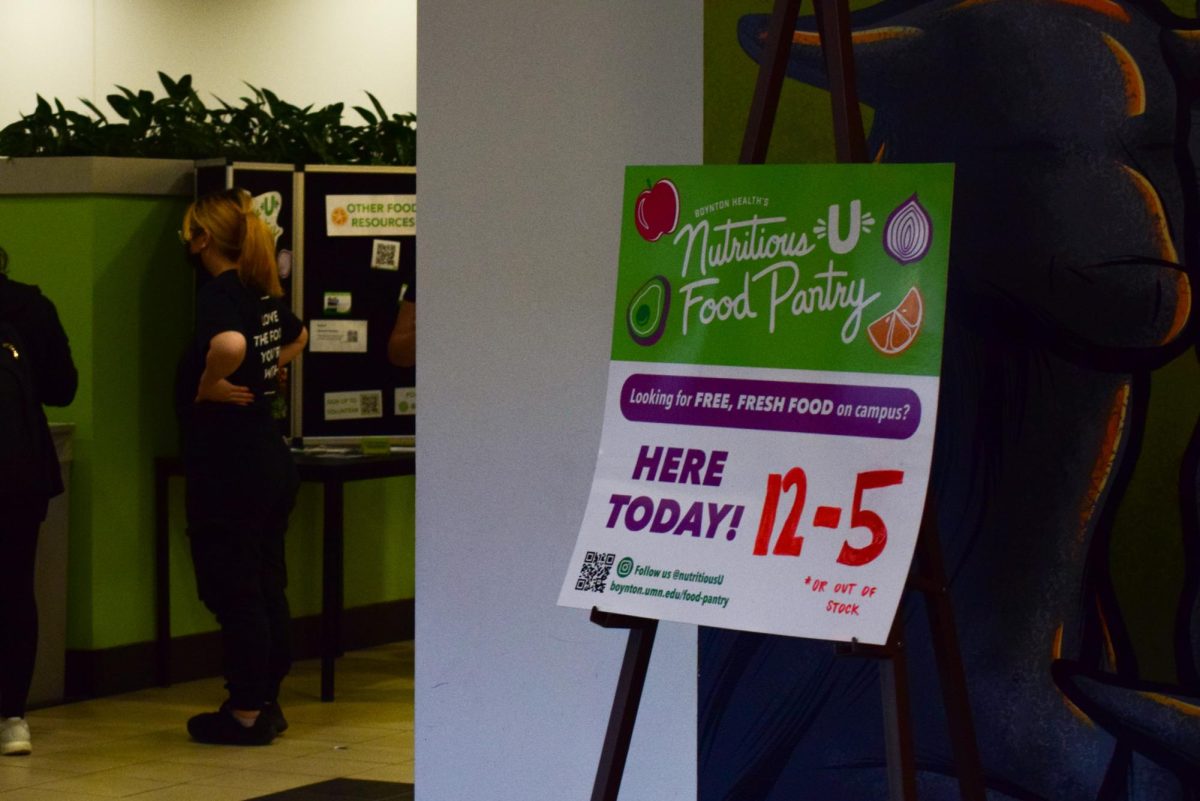Food bank and shelf leaders met at the state capitol on Tuesday to back a bill that would provide $5 million in state funding to Minnesota food banks every year, a response to record-high hunger levels in the state.
The Minnesota Food Bank Program bill would use pre-existing money from The Emergency Food Assistance Program to fund six food banks that do not currently receive any state funding.
Should it pass, the bill will take effect in the 2025 fiscal year.
Bill author Sen. Heather Gustafson (DFL-Vadnais Heights) said in a statement to The Minnesota Daily this bill is a continuation of previous legislation that supported food-insecure communities, aiming to put more food in the hands of food banks and shelves.
“One of the gaps we still need to close is making sure that food banks are equipped with enough food and resources to service our community food banks,” Gustafson said. “Simply put, our food shelves and food banks need food.”
2023 was the hungriest year on record — and is already being outpaced in 2024, according to data from Second Harvest Heartland, one of the six food banks supporting the bill. Minnesota saw 7.5 million visits to food shelves in 2023.
The bill includes an amendment asking for an additional $2 million in one-time funding for the Minnesota Food Bank Program. Additionally, Gov. Tim Walz’s (DFL) budget proposal dedicated $5 million in one-time funding to food banks, shelves and tribal food programs, according to Sophie Wallerstedt, a spokesperson for Second Harvest Heartland.
Wallerstedt said Second Harvest is sending 30% more food to food shelves this month compared to April 2023 and the food bank system is “not in a sustainable place” to meet the unprecedented need for food in the state.
“We are sending out more food than ever before, and the system is running out of food,” Wallerstedt said. “We have food shelves that cannot meet the current need that’s out there.”
The record-high hunger levels statewide reflect levels on the University of Minnesota campus, according to Karin Onarheim, a health promotion specialist at Boynton Health.
In 2022, about 34 percent of undergraduate respondents were classified as food insecure, a 44 percent increase from 2019, according to a survey of University students conducted by the Office of Student Affairs.
Patrick Brady, a researcher in the School of Public Health at the University, said state funding for food banks helps relieve some of the financial burden of fundraising.
“Any money they need to put in for seeking fundraising and organizing events and trying to get donors is money that’s not going to serve as provision, so food for hungry families,” Brady said.
Onarheim, the manager of the University’s twice-monthly food pantry Nutritious U, said she has seen a considerable increase in student’s going to the pantry in the past year, pushing Nutritious U to grow its resources to meet students’ needs.
“We’re seeing double, sometimes triple the number of students we were used to,” Onarheim said. “We’ve since had to really grow and think of really diverse funding streams, get really creative to raise money, to order more food per person.”
Nutritious U applied for multiple grants to grow its financial resources and food availability, according to Onarheim. One of those grants was available to the pantry after the University received a Hunger Free Campus designation in 2022.
Wallerstedt said food insecurity can be best alleviated with preventative support that considers “financial stressors [people] have in their life that keep them from being able to afford food for their family or for themselves.”
Onarheim said beyond fulfilling Nutritious U’s goal of being a supplemental food resource, the pantry aims to put more money in students’ pockets to help them take care of other financial responsibilities.
“We like to use the analogy of a bathtub where the water’s flowing in and that’s all the money for your savings or your family helping you or your wages,” Onarheim said.
Wallerstedt said while the $5 million per year investment would be an excellent resource, it will not be enough to make drastic changes to the food bank system and alleviate hunger in the state.
“Even if we get $5 million a year, that is not going to meet the need out there,” Wallerstedt said. “We’ve already really scaled back the ask knowing that this isn’t a budget year.”
Gustafson’s statement said she is confident funding for food insecurity will pass.
“I’m confident that we’ll get something,” Gustafson said. “Maybe not the full ask, but something will likely go to food banks this session. If not, we will introduce an updated bill next year in the budget year.”
Wallerstedt said while the legislature works toward passing the bill, the long-term goal for food banks and shelves is to ensure food is readily accessible and affordable to all Minnesotans struggling with food insecurity.
“You find that folks who are faced with having to decide between paying rent and buying food are more likely to pay for their housing or their utilities or whatnot and go without food,” Wallerstedt said. “We would love to be in a space someday where people don’t have to make that choice because they have food available to them and can afford it.”
Correction: A previous version of this article misstated a statistic from a survey by the Office of Student Affairs. There was a 44% increase compared to the 2019 survey data.
Clarification: A clarification has been issued to discern the Nutritious U Pantry’s ability to track student food insecurity levels.






















